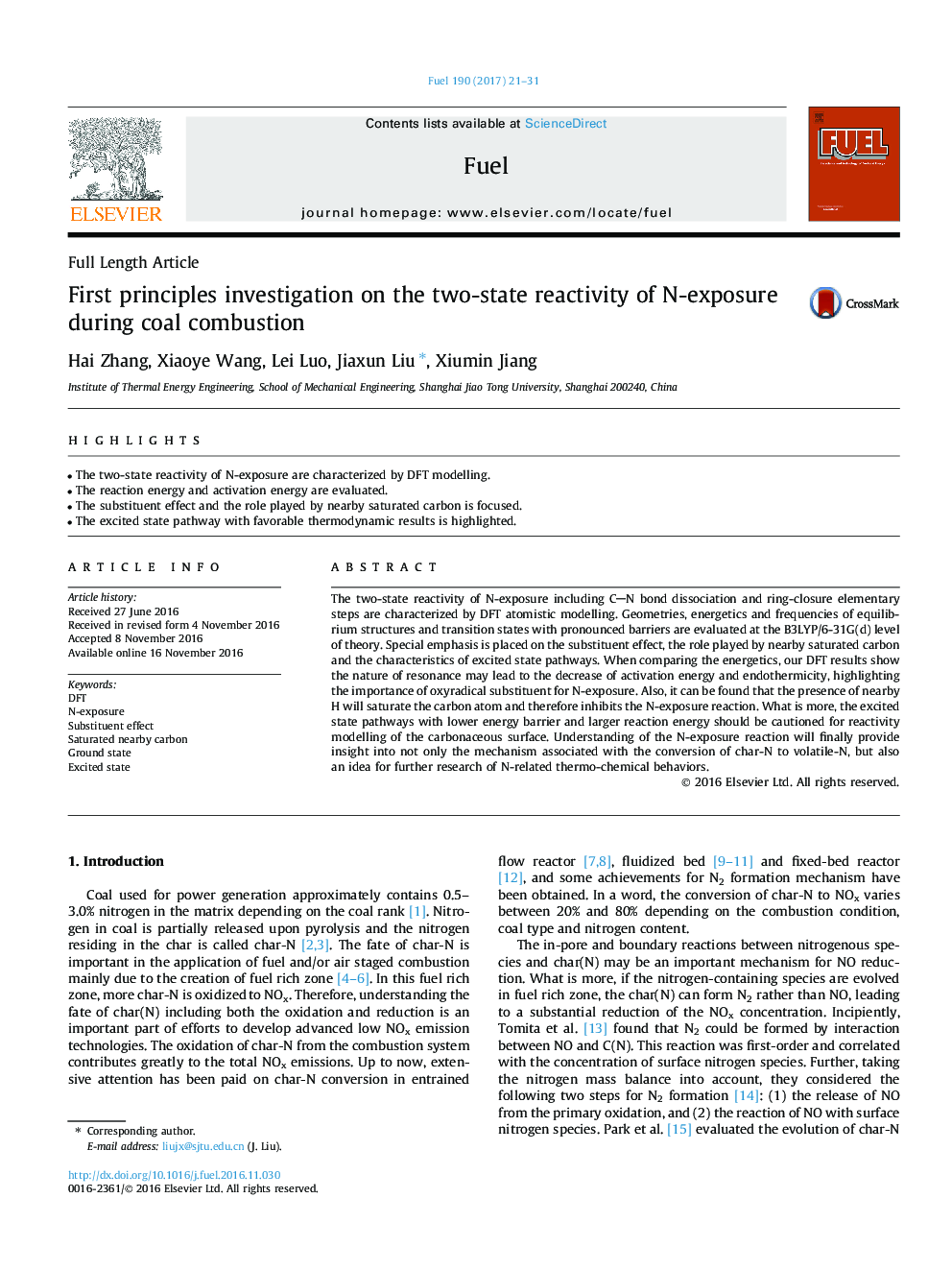| Article ID | Journal | Published Year | Pages | File Type |
|---|---|---|---|---|
| 6475538 | Fuel | 2017 | 11 Pages |
â¢The two-state reactivity of N-exposure are characterized by DFT modelling.â¢The reaction energy and activation energy are evaluated.â¢The substituent effect and the role played by nearby saturated carbon is focused.â¢The excited state pathway with favorable thermodynamic results is highlighted.
The two-state reactivity of N-exposure including CN bond dissociation and ring-closure elementary steps are characterized by DFT atomistic modelling. Geometries, energetics and frequencies of equilibrium structures and transition states with pronounced barriers are evaluated at the B3LYP/6-31G(d) level of theory. Special emphasis is placed on the substituent effect, the role played by nearby saturated carbon and the characteristics of excited state pathways. When comparing the energetics, our DFT results show the nature of resonance may lead to the decrease of activation energy and endothermicity, highlighting the importance of oxyradical substituent for N-exposure. Also, it can be found that the presence of nearby H will saturate the carbon atom and therefore inhibits the N-exposure reaction. What is more, the excited state pathways with lower energy barrier and larger reaction energy should be cautioned for reactivity modelling of the carbonaceous surface. Understanding of the N-exposure reaction will finally provide insight into not only the mechanism associated with the conversion of char-N to volatile-N, but also an idea for further research of N-related thermo-chemical behaviors.
